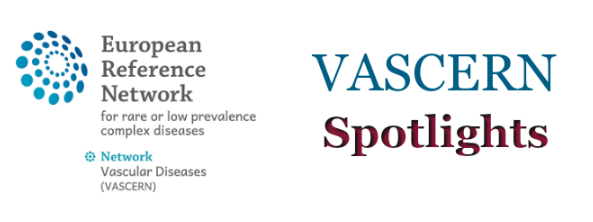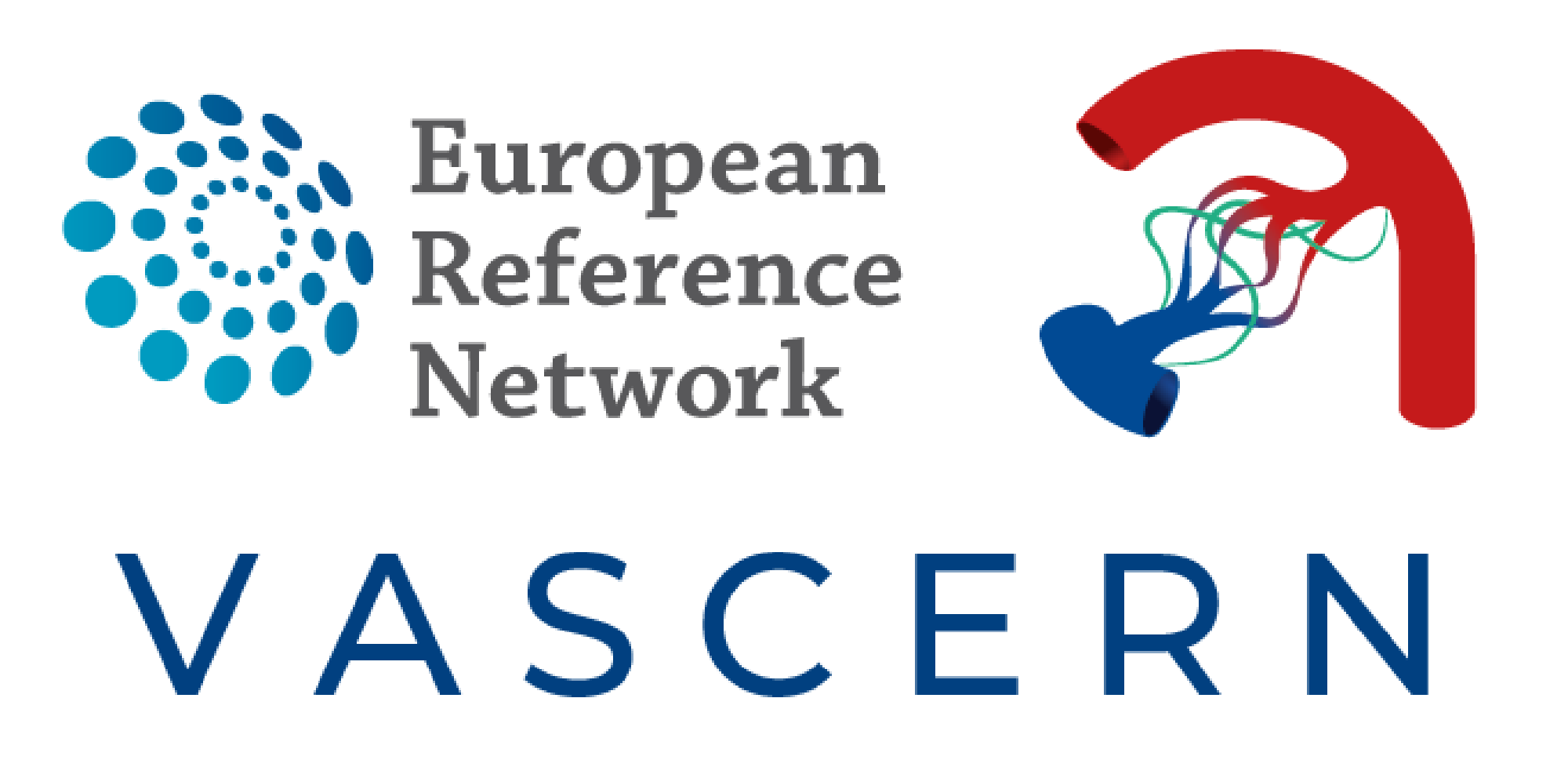
This month we had the chance to talk to European Patient Advocacy Group (ePAG) Deputy Co-Chair for the Vascular Anomalies Working Group (VASCA WG), Maria Barea. Maria represents the patient organization VASCAPA from Belgium and shares with us the most memorable moments of her VASCERN experience so far, her greatest hope for the ERNs and the complexities involved with supporting a child with a rare disease.

1. How did you become involved in the VASCERN project?
After the launch of VASCERN in February 2017, Professor Miikka Vikkula (Chair of the VASCA WG) suggested that our patient association, VASCAPA, join VASCERN’s European Patient Advocacy Group (ePAG) in order to participate in the European Reference Networks (ERNs). He explained that the ERNs would be game changing as there would be a true joint European effort and the research possibilities from this collaboration were extremely promising. We in VASCAPA realized that this was a very important initiative. I had the privilege to join in Sept 2017 and last year I became ePAG Deputy Co-Chair for the VASCA WG.
As a mother of a child with a rare vascular anomaly I handle the logistics and offer my family the best support I can, but for the patient themselves they have to carry everything else and it can be a lot to deal with. The power, resilience, resourcefulness and determination that people with a rare disease have is amazing!
2. How do you as an ePAG patient advocate participate in the activities of VASCERN?
I participate in the VASCERN ePAG monthly meetings where we try to establish best practices between all patient organizations and spread them to those organizations that are not actively involved in VASCERN. We also discuss the work in progress of each Rare Disease Working Group (RDWG) and right now we are focusing on creating patient journeys, with help from Ines Hernando from Eurordis. We have similar objectives for the VASCA ePAG group, but with a focus on vascular anomalies. Additionally, I participate in the annual VASCA WG Face-to-Face meetings and VASCERN days, where I bring (as the other ePAG representatives) the patient’s voice into the discussions.
3. What is one thing that you would like the general public to know about the reality of living with a rare disease (or caring for someone with a rare disease)?
I would like the general public to understand the complexity that comes with having a rare disease, as a rare disease can touch so many different aspect of a person’s life. From the quest to receive a proper diagnosis, to the follow-up with doctors from different specialties, to the impact on one’s school/work/social life and the related extra expenses (as some are not even reimbursed). As a mother of a child with a rare vascular anomaly I handle the logistics and offer my family the best support I can, but for the patient themselves they have to carry everything else and it can be a lot to deal with. The power, resilience, resourcefulness and determination that people with a rare disease have is amazing! And they could use some help from the general public, health care providers and policy makers to improve the care and benefits they deserve.
THIS is the value of the ERNs: having the most experienced healthcare professionals united and the opportunity to pool patient data in order to perform meaningful research that can lead to conclusions that will improve the lives of patients with rare diseases.
4. Can you tell us a little about your rare disease and/or the patient association that you represent?
Vascular anomalies encompass many different rare diseases that affect the vascular tissue or the vascular system and cause symptoms and complications (some life-threatening) that can have a major physical and/or functional impact on the person and his/her quality of life. VASCAPA is a young patient organization established in Belgium in 2012, with members also in France. We offer patients a place to talk and connect with people with similar experiences and challenges, which is so important for both children and adults with a rare disease. We guide patients to expert centers for the best medical care and also share information via our website and newsletter. Last year, learning from what other patient associations in VASCERN have done, VASCAPA organized our first patient-doctors meeting and it was really successful. These meetings give patients an opportunity to ask all of the questions that they don’t have time to ask during an appointment, they are also a good chance to facilitate the dialogue between doctors and patients and to share information.
5. What has been your most memorable moment as an ePAG patient advocate so far?
There have been
many memorable moments that have amazed me; I will mention three that exemplify
the importance and benefits of the ERNs.
At the VASCA face to face meeting in May 2019 we were developing the patient pathways for rare vascular anomalies. I was amazed to see all of these top expert doctors from across Europe giving their time to the ERN (while unpaid and being already so busy) and working to create these very much needed guidelines. It is inspiring and it gives real hope to patients. I am so thankful for these doctors and also for all of the patient advocates (volunteers) giving their perspective and energy to the ERNs.
At VASCERN Days in 2018, one of the experts shared that they were going to study a specific rare disease analyzing the data of about 20 patients. Immediately a doctor from another country offered to help by sharing their case information, followed by another, and in the end there were five different doctors who all agreed to share information for this study. It changes everything when there are larger patient numbers: you can perform real data analysis. THIS is the value of the ERNs: having the most experienced healthcare professionals united and the opportunity to pool patient data in order to perform meaningful research that can lead to conclusions that will improve the lives of patients with rare diseases.
Finally, just few days ago, due to the unfortunate crisis with the Covid-19 virus, patient organizations in Europe and the United States with their medical advisory teams started a consensus statement for patients with complicated vascular anomalies (available in EN/ FR) that also got approved by the VASCA WG. This shows how patient organizations are bringing patients’ questions directly to the experts’ attention, and how the interaction is working quickly and efficiently to provide us with answers.
My greatest hope is that everyone realizes the importance and the relevance of the ERNs and continues supporting them.
6. As a patient advocate, what is your hope for VASCERN and for the ERNs in general?
My greatest hope is that everyone realizes the importance and the relevance of the ERNs and continues supporting them. They are allowing for advances in research and knowledge on rare diseases to be made at the speed of light in the world of medicine. I am so thankful for the European Commission and Eurordis for starting this initiative but from my understanding it is a five year project. It will need to be implemented into the national healthcare systems, and the Member States will have to support this initiative if it is to continue. The Belgian Rare Disease Organization (RaDiOrg) is requesting to the Belgian national and regional governments the creation of a national network to work and collaborate with the ERNs (FR/NL). Other patient organizations, groups and Eurordis are doing similar actions in other EU countries. I really hope that all Member States step up to support the 24 ERNs so that their valuable work can continue to touch and improve the lives of the 30 million European citizens living with a rare disease and their families.


